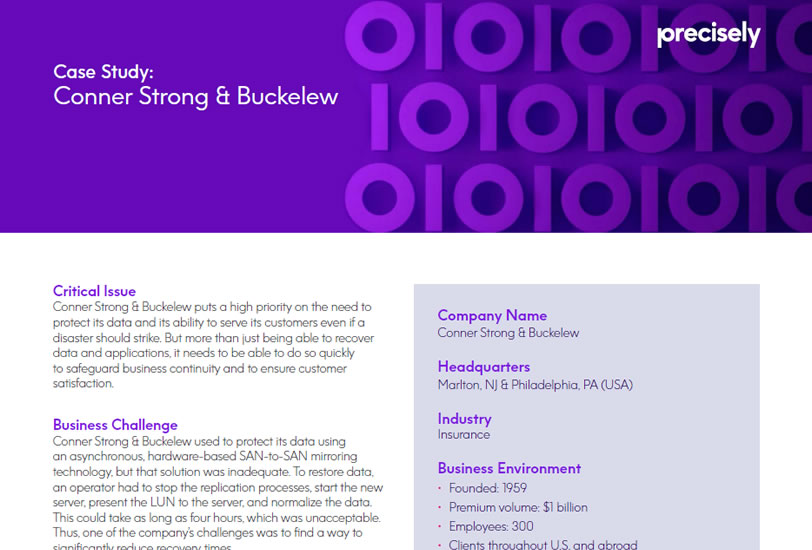Customer Story
Conner Strong & Buckelew
With Assure MIMIX DR for AIX, Conner Strong & Buckelew’s data is available for easy recovery
Conner Strong & Buckelew puts a high priority on the need to protect its data and its ability to serve its customers even if a disaster should strike. But more than just being able to recover data and applications, it needs to be able to do so quickly to safeguard business continuity and to ensure customer satisfaction.
Conner Strong & Buckelew used to protect its data using an asynchronous, hardware-based SAN-to-SAN mirroring technology, but that solution was inadequate. To restore data, an operator had to stop the replication processes, start the new server, present the LUN to the server, and normalize the data. This could take as long as four hours, which was unacceptable. Thus, one of the company’s challenges was to find a way to significantly reduce recovery times.
In addition, the mirroring technology did not provide any way to verify that corrupted data had not entered the mirror during replication or subsequently. Furthermore, the solution was very difficult to test, meaning that Conner Strong & Buckelew did not have as high a level of confidence in the integrity of the mirror as it would have liked. Therefore, another of the company’s challenges was to find a more reliable technology.
These issues were impetus enough to find a better backup and recovery solution, but the company’s hand was forced when the mirroring process broke. The vendor tried unsuccessfully to fix it and, because the technology was no longer supported, the vendor wouldn’t replace it.
This left Conner Strong & Buckelew with daily file-level backups as its only data protection. This was completely unacceptable. Recovery would have taken too long and data created between the daily backups was unprotected.
Conner Strong & Buckelew found an easy solution to its disaster recovery (DR) challenges: Assure MIMIX DR for AIX, which replicates data from a production server to a backup in real-time, while also providing true Continuous Data Protection (CDP) to enable point-in-time recovery. The ability to restore data to an earlier state can be invaluable if data is corrupted due to operator error or malicious intent. You can then “dial back” your data to a point before the corruption occurred.
